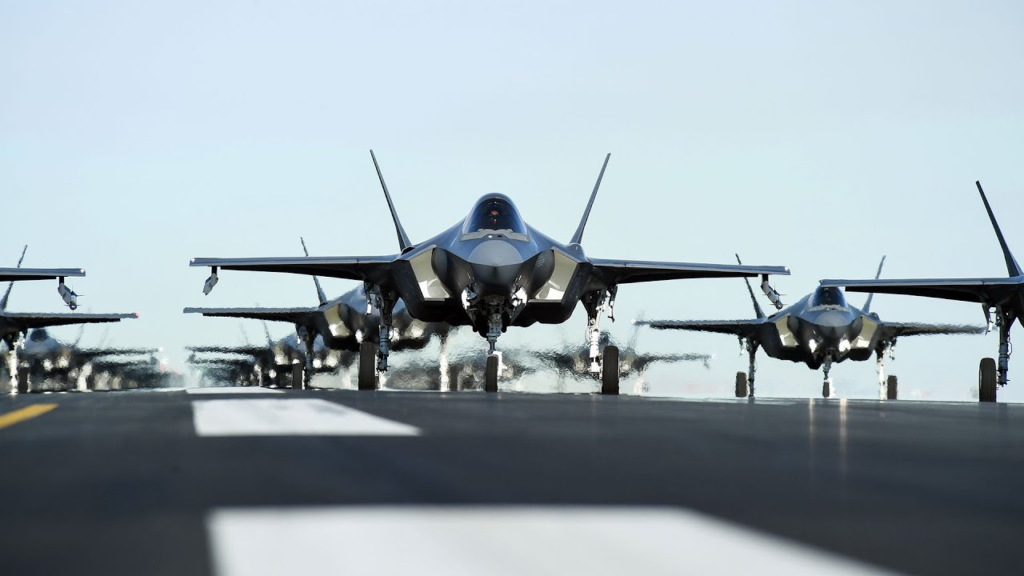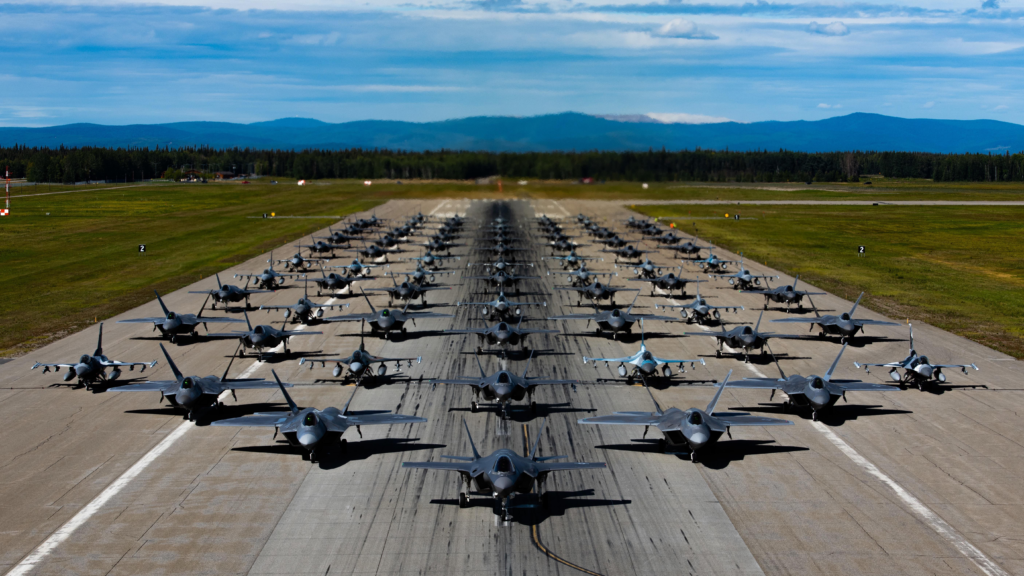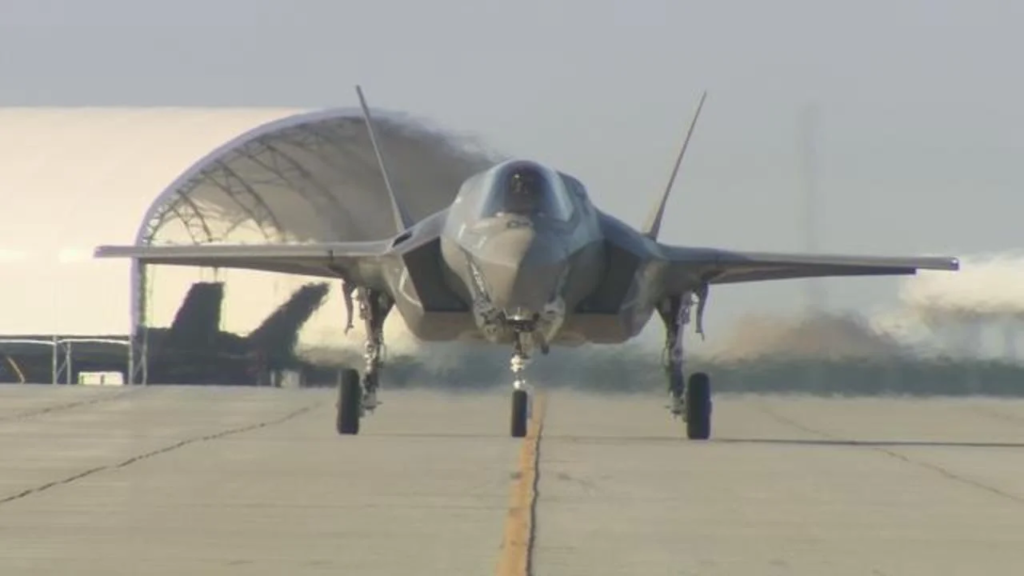The United States’ offer of the F-35 to India has sparked significant discussions within defense circles. During a joint statement with Prime Minister Narendra Modi, former U.S. President Donald Trump remarked, “Starting this year, we’ll be increasing military sales to India by many billions of dollars, and we are working on making sure India will eventually get the F-35 stealth fighter.”
This statement marks a notable shift in Washington’s stance, as the U.S. had historically been hesitant about offering the F-35 to India, particularly due to concerns over India’s procurement of the Russian S-400 air defense system. The prospect of acquiring the F-35 raises several questions regarding India’s air power capabilities, its impact on indigenous fighter programs, and the strategic risks involved in operating an American platform.

The F-35: A Tech Marvel with Operational Challenges
The F-35 is one of the most advanced fighter aircraft in the world. Designed for stealth, sensor fusion, and network-centric warfare, it represents the pinnacle of aviation technology. However, like any cutting-edge platform, it comes with its share of issues, including high maintenance costs, software integration challenges, and restrictions on operational independence.
For the Indian Air Force (IAF), which is struggling with a dwindling number of fighter squadrons, the addition of the F-35 could significantly enhance combat capabilities. The aircraft’s ability to operate undetected in contested airspace and leverage advanced electronic warfare systems could provide the IAF with a technological edge.

F-35 as a Potential Contender for the MMRCA 2.0 Program
The IAF has long sought to procure 110-114 medium multi-role combat aircraft (MMRCA) to bolster its fleet. The F-35, while originally positioned as a high-end fifth-generation fighter, could theoretically be integrated into this requirement.
However, U.S. defense sales often come with stringent operational restrictions. Historically, American military platforms have been subject to end-user agreements that limit how they can be deployed. Moreover, the U.S. reserves the right to block spare parts and support, raising concerns about long-term sustainability.
A recent example is the Biden administration’s decision to block the delivery of Apache attack helicopters to India despite a completed deal and full payment. This move highlights the risks associated with dependence on American defense equipment. A fighter jet represents a 20-30 year investment, making any potential embargo or operational restriction even more critical.
To mitigate this, India must build safety nets, including strong contractual guarantees, indigenous maintenance capabilities, and a diversified supply chain.

Challenges in Integrating the F-35 into India’s Existing Air Power Doctrine
The F-35 is not just a standalone fighter; it is a highly networked platform that thrives in an ecosystem comprising airborne early warning and control (AEW&C) systems, electronic warfare aircraft, and battlefield management systems. The U.S. Air Force operates the F-35 alongside assets like the E-3 AWACS, EA-18G Growler, and RC-135 Rivet Joint to maximize its effectiveness.
India, however, does not possess a similar networked battle space. While the IAF operates platforms such as the Netra AWACS, C-130J Super Hercules, C-295, C-17 Globemaster III, Apache, and Chinook helicopters—all of which have been integrated with Indian systems—the F-35 would still require a robust network-centric warfare environment that currently does not exist.
Although India has successfully integrated various Western and Russian platforms into its Integrated Air Command and Control System (IACCS), fully exploiting the F-35’s networked capabilities would be a challenging task.

Ensuring F-35 Procurement Does Not Jeopardize Indigenous Fighter Programs
One of the most critical concerns regarding an F-35 acquisition is its potential impact on India’s indigenous fighter programs. The Advanced Medium Combat Aircraft (AMCA) and Tejas Mk2 projects are crucial for achieving self-reliance in defense manufacturing.
Procuring the F-35 could redirect financial and technical resources away from these projects, delaying their development. Additionally, the IAF must retain the ability to upgrade the aircraft with Indian avionics and weapons, a factor that has historically been restricted in American platforms.
India’s long-term goal should be to develop its own fifth-generation fighter capabilities. If the F-35 deal hampers AMCA’s progress, it could undermine India’s defense self-sufficiency. Therefore, any negotiations should ensure that:
- India retains the ability to integrate indigenous weapons and systems on the F-35 platform.
- The F-35 acquisition does not result in a reduced commitment to AMCA and other indigenous projects.
- The deal includes firm contractual guarantees that prevent any unilateral block on parts, maintenance, or upgrades.
A Calculated Decision for India’s Future Air Power
The F-35 offer to India represents a significant policy shift by the U.S. However, it is not without its strategic and operational challenges. While the jet’s advanced capabilities could strengthen the IAF, India must weigh the risks of operational restrictions, supply chain dependencies, and potential impact on indigenous fighter programs.
If the government can secure favorable terms that safeguard operational independence and ensure compatibility with India’s existing defense ecosystem, the F-35 could be a valuable addition. However, any procurement decision must be made with a long-term perspective, keeping in mind India’s broader defense ambitions and self-reliance initiatives.

US is worried about the tech part, we are worried about their internal politics and interference in our affairs. My view is that we need to develop our strength to tackle US because their friendship is worse than enmity. They are friends only till they milk you dry. Our ecosystem will mature in 10-15 years.
I like f35 interoperability in quad islands space occupied minimal take of 1500 foot runway and vertical descent into air craft carrier and parking lots in Amal islands like lakshdweep to keep Maldives to Diego Garcia if we secure base use right from usa in Indian onto go along with fighters refueling resupply and r and r even better unless other fighters like rafale match capability to vertical descent and short takeoffs off small islands archipelago chains in ior region command control communication intelligence sharing including situation awareness in pilot head gear real time fusion with sensors
We need to interact like a lergest nation on earth in size of population economy power projection and aukaad as befits the mammoth army and armed forces reserve and paramilitary size